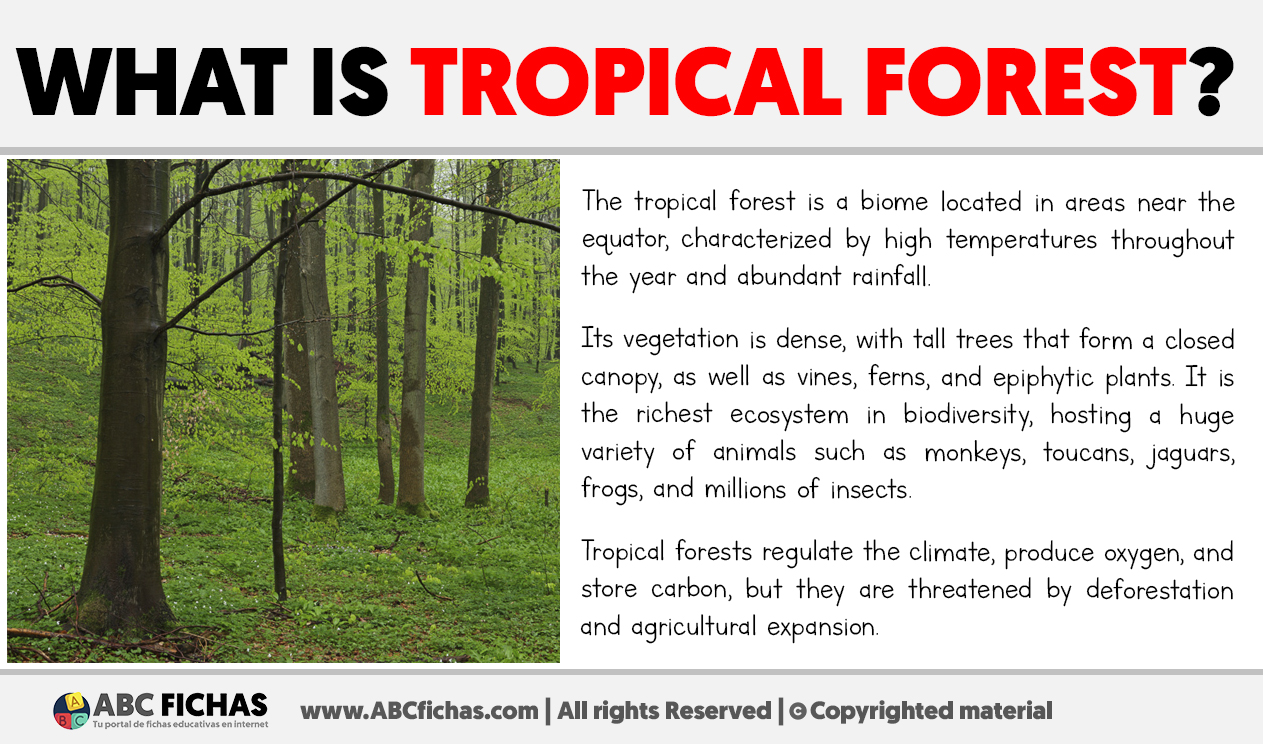The tropical forest is one of the richest and most diverse biomes on Earth. It is located in regions near the equator, where temperatures remain high throughout the year and rainfall is abundant. This constant warmth and moisture create the perfect conditions for a dense and vibrant ecosystem filled with countless species of plants and animals.

The vegetation is dominated by tall trees that form a thick canopy, blocking sunlight from reaching the ground. Beneath this canopy grows an incredible variety of ferns, vines, mosses, and epiphytic plants. Tropical forests are known as the “lungs of the planet” because they produce vast amounts of oxygen and help store carbon, playing a key role in regulating the global climate.
The biodiversity of tropical forests is unmatched. They are home to millions of insects, colorful birds like toucans and parrots, mammals such as monkeys, jaguars, and sloths, as well as reptiles, amphibians, and countless microorganisms. Many species that live here are still undiscovered.
Unfortunately, tropical forests face severe threats from deforestation, logging, and agricultural expansion. Protecting them is critical not only for preserving biodiversity but also for maintaining ecological balance and combating climate change on a global scale.